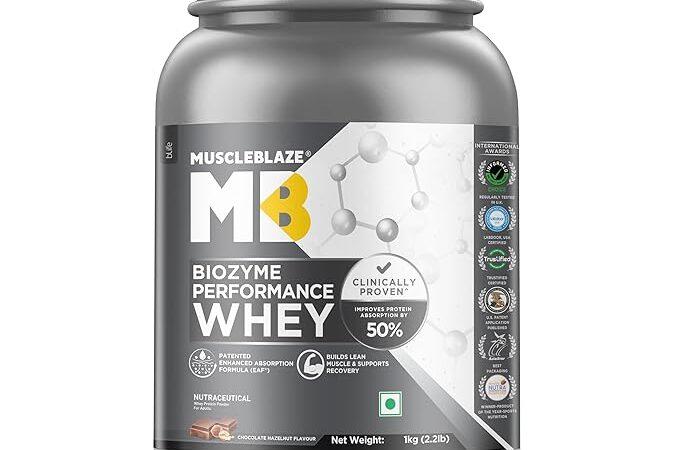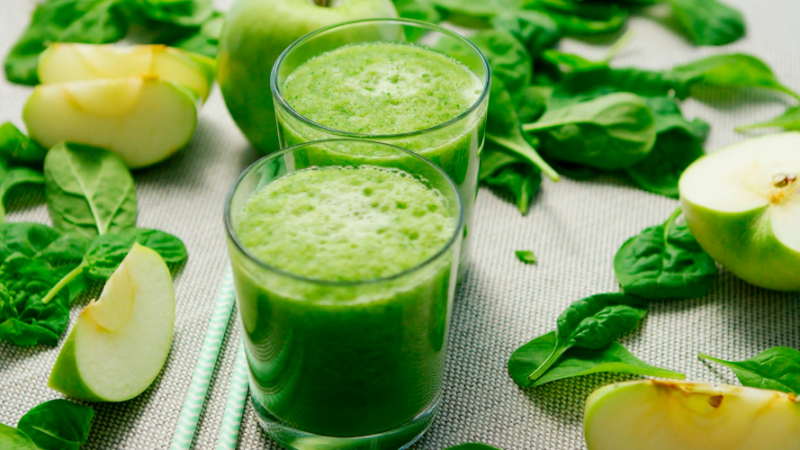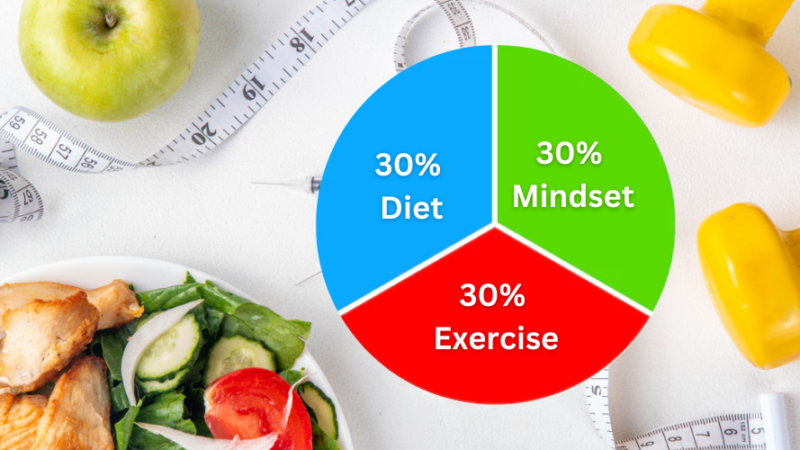Which High Carb Foods to Avoid to Lose Weight

Losing weight is often portrayed as a battle against calories, but when it comes to fat loss and sustainable health, not all calories are created equal-especially when carbohydrates are involved. High-carb foods can be sneaky culprits in derailing your weight loss goals.
If you’ve been eating “low-fat” or “healthy” snacks but still struggling to shed pounds, your carb choices might be to blame.
In this guide, we’ll break down the role of carbohydrates in your body, the types of High Carb Foods to Avoid to Lose Weight, healthier alternatives, and practical strategies to optimize your diet for effective and lasting weight loss.
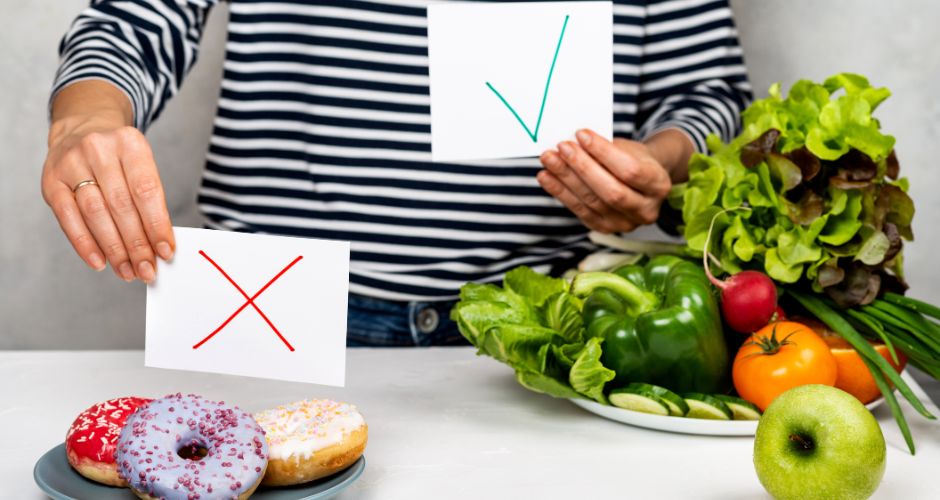
Understanding Carbohydrates and Weight Loss
Carbohydrates are one of the three essential macronutrients (alongside protein and fat), and they serve as your body’s primary source of energy. But not all carbs are created equal.
Complex vs. Simple Carbohydrates
- Simple carbohydrates (like sugar and white bread) are quickly digested and spike your blood sugar levels, leading to energy crashes and cravings.
- Complex carbohydrates (like whole grains and legumes) digest slowly, providing sustained energy and better satiety.
Impact of High-Carb Foods on Appetite and Fat Storage
When you consume high-carb foods-especially those rich in simple sugars-your body responds with a spike in insulin, a hormone that promotes fat storage. Frequent spikes lead to:
- Increased fat accumulation (especially belly fat)
- Cravings and overeating
- Blood sugar crashes that make you feel tired and hungry again
Benefits of Low-Carb Diets for Weight Loss
Low-carb diets have gained popularity for good reason:
- They reduce insulin levels, promoting fat burning
- Improve satiety by encouraging more protein and fat intake
- Help reduce water retention caused by carb-induced glycogen storage
High-Carb Foods to Avoid
Not all carbs are bad, but some types are best avoided or significantly limited, especially when you’re trying to lose weight.
1. White Bread
- Why avoid: Made with refined flour, white bread spikes blood sugar and offers little fiber or nutrients.
- Better choice: Whole-grain or sprouted bread.
2. Pasta (Especially Refined)
- Why avoid: High in simple carbs and low in fiber. Refined pasta quickly turns to sugar in the bloodstream.
- Better choice: Zucchini noodles, chickpea or lentil pasta.
3. White Rice
- Why avoid: Stripped of fiber and nutrients, white rice has a high glycemic index.
- Better choice: Brown rice, quinoa, or cauliflower rice.
4. Sugary Cereals
- Why avoid: Many breakfast cereals are loaded with sugar and fast-digesting carbs.
- Better choice: Steel-cut oats, chia pudding, or unsweetened muesli.
5. Potato Chips
- Why avoid: High in carbs, fat, and salt. They cause quick insulin spikes and fat gain.
Better choice: Baked kale chips or air-popped popcorn.

6. French Fries
- Why avoid: Fried and starchy, fries are one of the worst foods for weight gain.
- Better choice: Baked sweet potato wedges.
7. Sodas and Sugary Drinks
- Why avoid: Contain empty carbs with no fiber or nutrients. Lead to belly fat and insulin resistance.
- Better choice: Infused water, sparkling water with lemon.
8. Fruit Juices
- Why avoid: Even 100% fruit juice is high in sugar and lacks the fiber found in whole fruit.
- Better choice: Eat whole fruit instead, like apples or berries.
9. Pastries and Cakes
- Why avoid: Made with white flour and sugar, they are high in carbs and low in nutrients.
- Better choice: Almond flour muffins or fruit-based treats with no added sugar.
10. Ice Cream
- Why avoid: Packed with sugar and refined carbs, plus fat. It’s a triple threat to your waistline.
- Better choice: Greek yogurt with berries or banana “nice cream.”
11. Energy Bars/Granola Bars
- Why avoid: Many are disguised candy bars, full of sugar and simple carbs.
- Better choice: Look for bars with <5g sugar and >5g fiber or make your own.
12. Sweetened Yogurt
- Why avoid: Flavored yogurts often contain more sugar than a doughnut.
- Better choice: Unsweetened Greek yogurt with fruit or cinnamon.
13. White Flour
- Why avoid: Found in many baked goods, white flour is high in carbs and devoid of fiber.
Better choice: Almond flour, oat flour, or whole wheat flour in moderation.
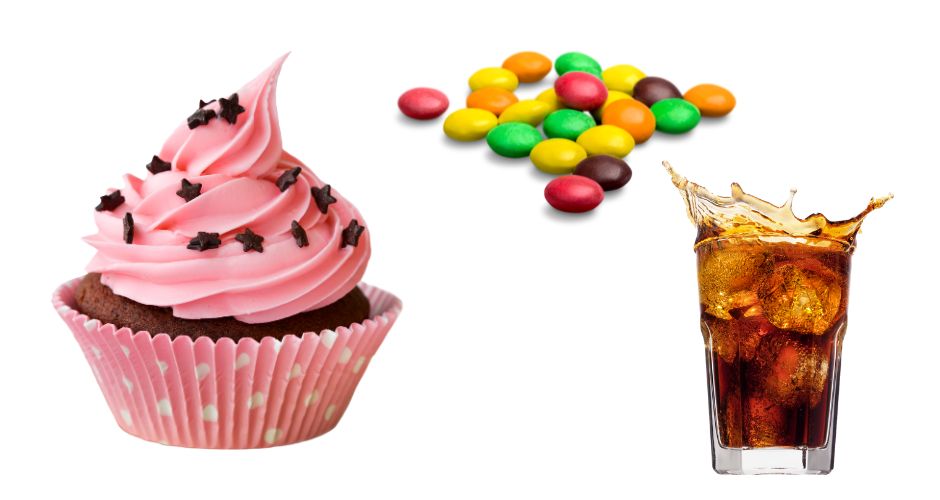
14. Pretzels
- Why avoid: Often seen as a “healthy” snack, pretzels are just refined carbs with salt.
- Better choice: Raw nuts or roasted chickpeas.
15. Crackers
- Why avoid: Most are made with refined grains and added sugars.
- Better choice: Whole-grain or seed-based crackers with fiber.
16. Pizza Dough (Refined Flour)
- Why avoid: Typical pizza dough is loaded with white flour and offers little nutritional value.
- Better choice: Cauliflower crust or whole wheat flatbread.
17. Candy
- Why avoid: Pure sugar with zero nutrients, candy contributes directly to fat gain and cravings.
- Better choice: Dark chocolate (70%+), fruit, or nut butter treats.
18. Rice Cakes
- Why avoid: Low in fiber and protein, rice cakes spike blood sugar rapidly.
- Better choice: Whole grain toast with avocado or nut butter.
19. Canned Baked Beans
- Why avoid: Though beans are good, canned versions often contain added sugar and syrup.
- Better choice: Homemade beans or low-sugar, organic canned options.
20. Muffins
- Why avoid: High in sugar and white flour, even “healthy” ones are usually high in carbs.
- Better choice: Homemade muffins using almond flour, flaxseed, or oat bran.
- They lack essential fiber, vitamins, and minerals
You should try-3-Day No-Carb Challenge for Weight Loss
Healthier Carbohydrate Alternatives
Rather than cutting carbs completely, it’s smarter to swap high-carb foods with more nutrient-dense, high-fiber options.
1. Whole Grains and Fiber-Rich Options
- Opt for quinoa, oats, barley, brown rice, and buckwheat.
- These provide fiber, B vitamins, and sustained energy.
Tip: Always check the label-choose items with at least 3–5g of fiber per serving.

2. Nutrient-Dense Fruits and Vegetables
- Leafy greens, berries, zucchini, cauliflower, broccoli, and bell peppers are low in carbs but high in nutrients.
- Use cauliflower rice or zucchini noodles as pasta alternatives.
3. Legumes and Other Complex Carbs
- Beans, lentils, and chickpeas are rich in protein, fiber, and resistant starch, which supports gut health and weight loss.
Bonus: These options have a lower glycemic index, helping stabilize blood sugar.

Also check Can a Low-Carb Diet Help You Lose Weight
Strategies for Successful Weight Loss
Swapping carbs is just one part of the equation. Here are additional strategies to support your weight loss goals:
1. Balancing Macronutrients and Portion Control
- Don’t eliminate carbs entirely-instead, aim for balanced meals with lean protein, healthy fats, and fiber.
- Pay attention to portion sizes, especially for rice, pasta, and grains.
2. Pairing Carbs with Protein and Healthy Fats
- Combine carbs with protein (chicken, tofu) or healthy fats (avocado, nuts) to slow digestion and boost satiety.
- Example: Instead of just toast, opt for whole-grain toast with nut butter or eggs.
3. Focusing on Whole, Minimally Processed Foods
- Eat foods as close to their natural state as possible.
- Avoid anything with a long ingredient list, especially those you can’t pronounce.
The Role of Added Sugars in Weight Gain
Added sugars are hiding in more products than you think-from condiments to cereals and even savory snacks.
1. Prevalence in Ultra-Processed Foods
- Ketchup, flavored yogurt, pasta sauces, and low-fat products often contain hidden sugars.
- These sugars contribute to visceral fat, the most dangerous kind.
2. Recommended Daily Intake Limits
- The American Heart Association recommends:
- 25 grams/day for women
- 36 grams/day for men
- 25 grams/day for women
- Most people exceed these numbers without even realizing it.
3. Identifying and Avoiding Hidden Sugars
- Look for names like dextrose, maltose, corn syrup, cane juice, and fruit concentrate on labels.
- Stick to natural sweeteners like stevia, monk fruit, or small amounts of raw honey if needed.
Optimizing Carbohydrate Consumption
Not all carbs are bad-when consumed wisely, they can fuel your weight loss journey.
1. Choosing Low-Glycemic Index Options
- GI measures how quickly carbs affect your blood sugar.
- Choose low-GI foods like lentils, beans, oats, and non-starchy vegetables.
2. Incorporating High-Fiber Foods for Satiety
- Fiber slows digestion and helps you feel full longer.
- Aim for 25–30 grams of fiber daily, from whole grains, veggies, fruits, and legumes.
3. Balancing Carbs with Overall Calorie Intake
- Even healthy carbs can contribute to weight gain if you eat more calories than you burn.
- Use apps or food diaries to monitor your daily intake and stay in a moderate calorie deficit.
Final Thoughts: Eat Smart, Not Less
Carbohydrates are not your enemy-poor carb choices are. By avoiding refined and high-sugar foods and embracing complex, fiber-rich alternatives, you can nourish your body while promoting fat loss. Weight loss isn’t just about cutting carbs; it’s about making smarter decisions consistently.
Remember: the goal isn’t deprivation. It’s empowerment. Make carbs work for you-not against you.
Also check –How Protein Powders Can Help You Lose Weight and Build Muscle
FAQ
1. What foods should I avoid when trying to lose belly fat?
To lose stubborn belly fat, avoid refined carbs like white bread and pastries, sugary beverages, processed snacks, fried foods, and alcohol. These increase visceral fat, which surrounds abdominal organs and raises health risks.
2. What are the foods to avoid to lose weight very quickly?
To speed up weight loss, avoid high-calorie, low-nutrient foods such as fast food, white rice, sugary cereals, desserts, soda, and energy drinks. Also limit processed meats and full-fat dairy products.
3. What are some low-carb foods that support weight loss?
Low-carb, weight-loss-friendly foods include leafy greens (spinach, kale), cruciferous vegetables (broccoli, cauliflower), eggs, avocados, nuts, seeds, lean meats, fish, tofu, and Greek yogurt.
4. What foods should women avoid when trying to lose belly fat?
Women looking to shed belly fat should avoid white bread, sugary lattes, processed snack bars, fruit juices, and sweetened yogurts. Focus instead on fiber-rich foods, lean protein, and healthy fats.
5. What are 5 fruits to avoid for weight loss?
While fruit is healthy, these high-sugar fruits may hinder weight loss when eaten in excess:
- Bananas
- Grapes
- Mangoes
- Cherries
- Pineapple
Stick to lower-sugar fruits like berries, kiwi, or grapefruit when watching your weight.
6. What is a carbohydrate food list for weight loss?
For weight loss, choose quality carbs like:
- Quinoa
- Oats
- Brown rice
- Lentils
- Chickpeas
- Sweet potatoes
- Berries
- Leafy greens
These are fiber-rich and lower on the glycemic index, supporting satiety and blood sugar control.
7. What are 10 foods high in carbohydrates to avoid during weight loss?
Here are 10 high-carb foods to limit or avoid when trying to lose weight:
- White bread
- Pasta (especially refined)
- White rice
- Potato chips
- Soft drinks
- Candy and sweets
- Pastries and baked goods
- Sweetened cereals
- Energy drinks
- Granola bars (processed ones)
These spike blood sugar and can lead to fat gain, especially around the midsection.
8. What foods should I avoid to lose weight after 50?
After age 50, metabolism slows, so it’s crucial to avoid:
- Sugary snacks
- Refined grains
- Fried foods
- High-fat meats
- Alcohol
- High-sodium processed meals
Focus on whole foods, lean proteins, and complex carbs to support muscle mass and maintain a healthy weight.



